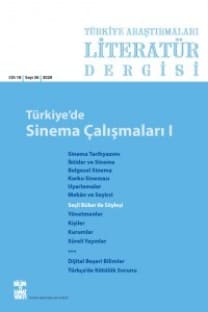Mahkeme Kayıtlarının Kılavuzu: Sakk Mecmuaları
İslam toplumlarında hukukî ilişkilerin mahkemelerde kayda geçirilmesine önem verilmiş ve bu kayıt işleminin ne şekilde yapılacağına dair eserler yazılmıştır. Bu eserler, Osmanlı öncesinde ?şurut? diye isimlendirilirken Osmanlı'da sakk kavramının öne çıktığı görülmektedir. Bu isim değişikliğinin yanı sıra gerek şuruttan sakke geçiştex gerekse XVI. yüzyıldan XIX. yüzyıla kadar sakk mecmualarında bazı değişiklikler dikkat çekmektedir. Sakk mecmualarında; hüccet ve ilamlardan oluşan eserlerden bunların yanı sıra maruz, emir ve ferman, murasele, mahdar, elkab, dibace ve imza suretleri içeren eserlere; kısa hüccetlerin çoğunlukta olduğu eserlerden uzun ilamların çoğunluğu teşkil ettiği eserlere; belli konulara dair numuneler içeren eserlerden fıkıh kitaplarında yer alan bölüm başlıklarının önemli bir kısmına dair numuneler içeren eserlere; Arapça'dan Türkçe'ye geçildiği görülmektedir. Bu yazıda sakk mecmuaları; XVI. yüzyıldan XIX. yüzyıla tarihi süreç içerisinde tanıtılmaya çalışıldığı gibi şurut, fıkıh ve fetva kitaplarıyla da mukayese edilmeye çalışıldı. Ayrıca yazının sonunda tespit edilebilen sakk mecmualarına dair bir literatür sunuldu.
The Manuals for the Registration of Judicial Affairs, the Sakk Mecmuas
The registration of judicial affairs was of great significance in the Islamic societies and there had been specific books written on how registration should be made. Although in the pre-Ottoman period ?şurût? was the term used for these works, ?sakk? was the term used during the Ottoman Period. Apart from the change in their names that occurred during the transition from şurût to sakk, in the period from the 16th to the 19th century there appeared considerable modifications in the contents and forms of the sakk mecmuas. While formerly the periodicals were comprised of works that contained hüccet and ilams, later they came to include also maruz, emir (imperial decrees), firman, murasele, mahdar, elkab, dibace and forms of signitures. Similarly, there was a shift from short hüccets to long ilams. Furthermore, the works formerly contained exemplary cases only on particular topics, but later the exemplary cases were exten- ded so as to embrace considerable parts of the topics that are mentioned in the fıkh books. Lastly, Ottoman Turkish, instead of Arabic, came to be used. This article not only reviews the sakk periodicals in the historical timeline from 16th to 19th century, but also compares them with şurût, fıkh and fetwa books. Finally, the literature on sakk periodicals that are located by the author is presented at the end of the article.
